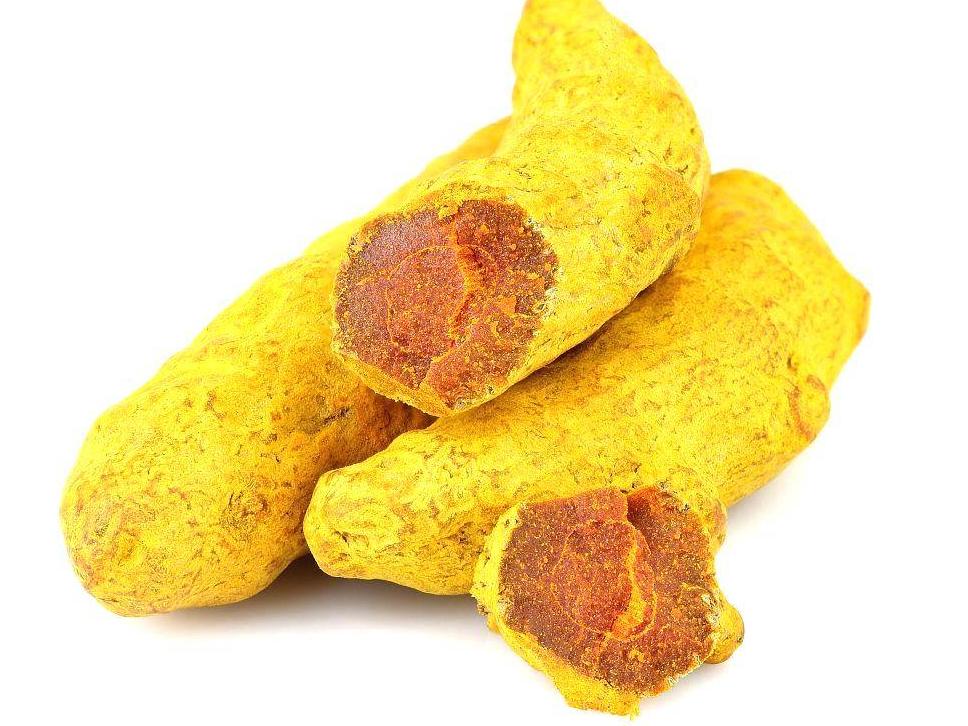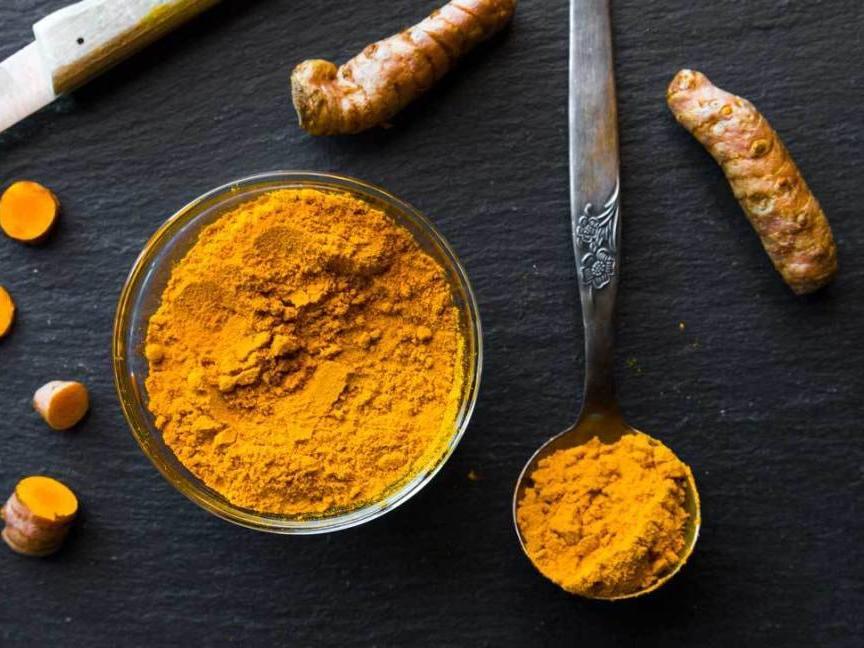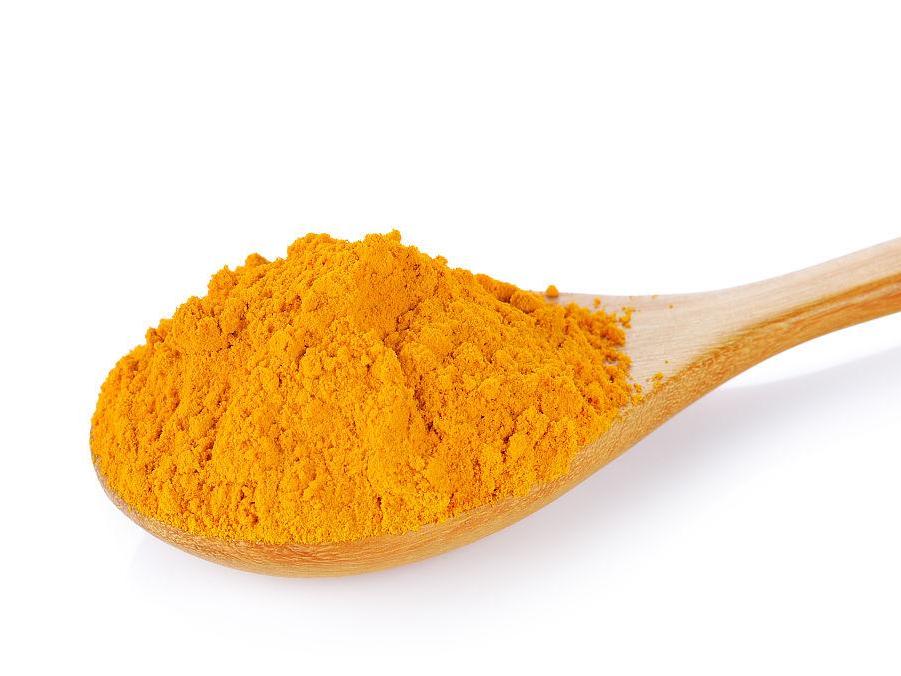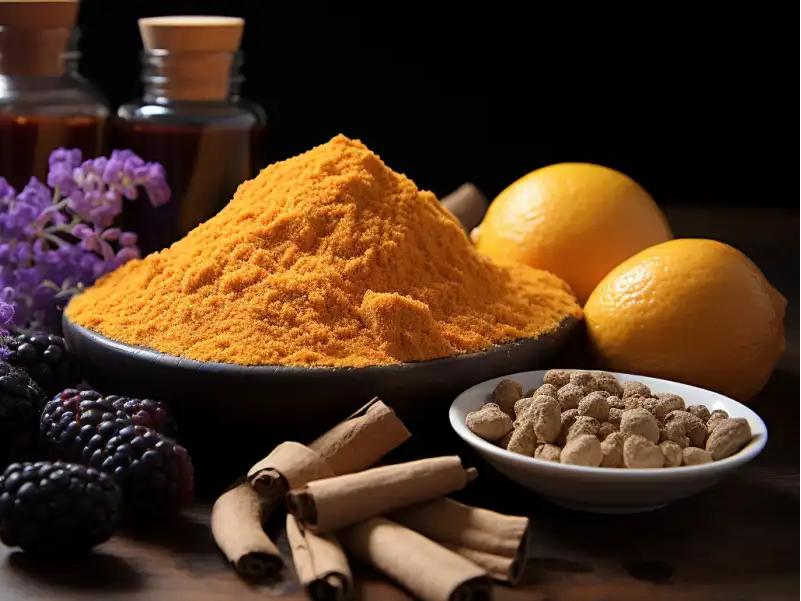What Is the Use of Curcumin in Food Packing?
Food safety is a global challenge that has attracted our attention [1]. The growth and reproduction of microorganisms during food storage is the main cause of food spoilage and deterioration, which can cause serious food safety problems and pose potential threats to human health [2]. Inhibiting and/or killing microorganisms is very important to ensure food safety [3]. With people's increasing health concerns, the demand for natural products as active food ingredients and smart packaging has grown significantly [4].
Curcumin is a polyphenolic compound found in nature, mainly derived from the rhizomes of turmeric. It has antibacterial, antioxidant, ultraviolet shielding, photosensitivity and acid-base responsive discoloration properties. Curcumin has also been approved as a safe food additive by the World Health Organization and the US Food and Drug Administration. It can be used as a natural pigment worldwide. In recent years, curcumin has been widely used in the field of food packaging [5,6]. Curcumin can extend the shelf life of food by preventing lipid oxidation and limiting microbial growth, and can be used as an indicator material for real-time evaluation of the safety and quality of packaged food. Therefore, curcumin as a food active packaging and smart packaging is an ideal choice for extending the shelf life of food and ensuring food quality and safety.
At present, some scholars at home and abroad have studied the application of curcumin in the food packaging industry. Among them, Huang Hahe et al. [7] studied the research progress of curcumin in the field of food preservation using microcapsules, electrospinning, nanoparticles and colloids. Huang Xinghai et al. [8] summarized the research progress of curcumin added to natural polymers (chitosan, starch, cellulose, gelatin, and alginate) to prepare intelligent active packaging films. Roy et al. [9] mainly introduced the application of curcumin as a natural food coloring agent in active packaging and intelligent packaging.
Aliabbasi et al. [10] reviewed the application of curcumin-loaded polysaccharide and/or protein composite films in the food packaging industry. Tambawala et al. [11] reviewed the application of curcumin in various petroleum-based, various petroleum-based, biodegradable and natural polymer-based polymers. However, these studies did not pay much attention to the ultraviolet shielding and photosensitizing properties of curcumin. Therefore, this paper reviews the structure and physicochemical properties of curcumin, as well as its mechanism of action and recent developments in food packaging as an antimicrobial agent, antioxidant, ultraviolet shielding agent, photosensitizer and pH indicator. Finally, the challenges still facing the current application of curcumin and the prospects for its future research are presented.
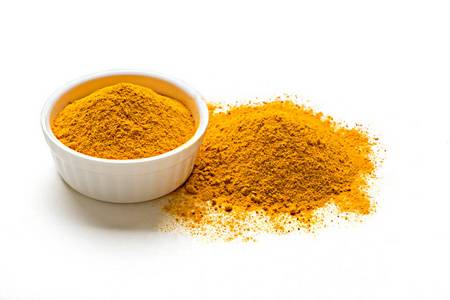
1 Structure of curcumin
Curcumin is a bioactive natural compound isolated from turmeric. It has a regular crystal structure consisting of two α, β-unsaturated carbonyl groups and a heptyl chain linked to two phenolic ortho-methoxy OH groups on an aromatic ring. This structure gives curcumin its hydrophobic properties [12]. According to the position of the methoxy group on the aromatic ring, it can be divided into curcumin, demethoxycurcumin and bisdemethoxycurcumin. Curcumin is the most important component and has a yellow-orange color [13]. Curcumin contains two aromatic rings of ferulic acid, and has a maximum ultraviolet absorption peak at 420–430 nm. It can be determined using ultraviolet spectroscopy [14]. The two molecular conformations of curcumin are shown in Figure 1. Under acidic conditions, it mainly exists in the form of a ketone, while under alkaline conditions, it mainly exists in the form of an enol [15].
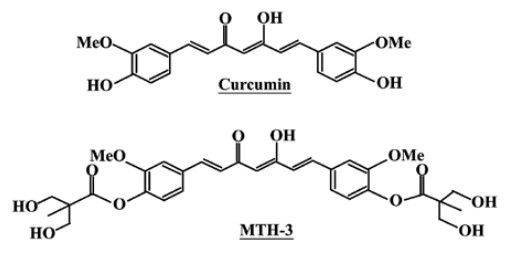
2 Physical and chemical properties of curcumin
Curcumin is a solid at room temperature with a molecular weight of 368.385 g/mol and an orange-yellow needle-like/crystalline powder [15]. Curcumin has a melting point of 183 °C and degrades at high temperatures. The loss of content increases rapidly with increasing temperature, and it exhibits instability at high temperatures [16]. At the same time, curcumin is also sensitive to neutral and alkaline conditions, and color changes due to structural changes under neutral and alkaline conditions [17]. Under alkaline conditions, it changes from yellow-orange to red, and the structure of curcumin changes from keto to enol. This characteristic makes curcumin ideal for developing intelligent packaging systems to monitor the quality of meat products such as pork, fish, and shrimp. Curcumin is poorly water-soluble and readily soluble in ethanol, dimethyl sulfoxide, methanol and acetone [16].
Curcumin is widely available, safe and non-toxic, has good biocompatibility, and is an excellent natural antimicrobial and antioxidant. Its antimicrobial and antioxidant activities are attributed to the presence of phenolic hydroxyl groups [18,19]. Due to the interaction of conjugated Π electrons, adjacent carbon-carbon double bonds and carbonyl groups, curcumin can effectively absorb ultraviolet light over a wide range, thereby preventing food oxidation [20]. Curcumin is photosensitive and can be used as a natural photosensitizer in smart food packaging [21]. Curcumin can be used in food packaging as an antimicrobial agent [18], antioxidant [19], UV shield [20], photosensitizer [21] and pH indicator [17], to maintain the sensory properties of food, improve the edible value of food, extend the shelf life of food, and monitor the freshness of food in real time [22,23].
3 Progress in the application of curcumin in active packaging
Active packaging refers to a packaging system that can effectively delay or prevent microbial spoilage, reduce oxidation, shield ultraviolet light, and improve food safety and quality by adding active substances such as antimicrobial agents and antioxidants to the packaging system. It is driven by consumer demand for high-quality, safe, and natural foods [24]. Curcumin has antibacterial, antioxidant and UV shielding properties, and can protect food from microbial contamination, delay food spoilage, and prevent UV-induced food oxidation. It is therefore well suited for use in active food packaging.
3.1 Curcumin as an antibacterial agent
Curcumin can inhibit the growth of bacteria such as Escherichia coli, Listeria monocytogenes, Streptococcus lactis, and Staphylococcus aureus by inhibiting the formation of bacterial biofilms, thereby extending the shelf life of food. Figure 2 shows the antibacterial mechanism of curcumin, which mainly includes: curcumin binds to the filamentous temperature-sensitive mutant Z, which is required for bacterial division, and inhibits bacterial division by inhibiting the formation of the Z ring [25]; destroys the integrity of the bacterial cell membrane, causing loss of intracellular DNA, nutrients, etc., and plays a bacteriostatic role [26]; inhibits the expression of bacterial virulence factors, and inhibits the formation of bacterial biofilms through the bacterial quorum sensing (Quorum Sensing, QS) system inhibits the formation of bacterial biofilms and exerts an antibacterial effect. It also inhibits the self-repair mechanism of bacteria. RecA is an ATP-dependent protein that can activate self-fission of pathway target protein inhibitors such as LexA, thereby inhibiting bacterial self-repair [19].
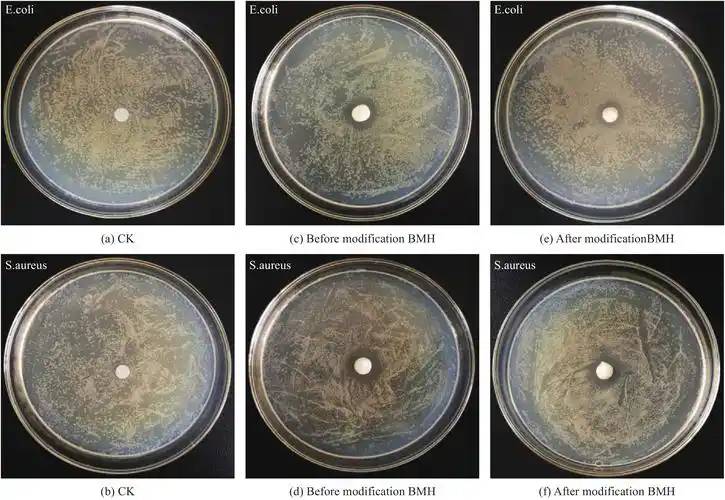
Most current research believes that the antibacterial mechanism of curcumin lies in the lipophilic group in its molecular structure entering the bacterial cell membrane, causing the loss of nutrients inside the cell and leading to bacterial death, thereby achieving an antibacterial effect. The antibacterial activity of curcumin is related to two active sites with phenolic hydroxyl groups and diketones. The diketone part has an enol-like structural exchange, and during the reaction, the active site is located on the two phenolic hydroxyl groups. The reaction mechanism is mainly the transfer of hydrogen atoms and electrons [18].
Curcumin can be used as an antimicrobial agent in active food packaging for meat products, fruits and vegetables, and other fields, to improve the shelf life of food by inhibiting and/or killing the growth and reproduction of microorganisms on the food surface. Table 1 lists the minimum inhibitory concentrations of different forms of curcumin against different microorganisms. Wang et al. [27] prepared curcumin microcapsules with porous starch and gelatin as wall materials, and studied their antibacterial activity against a variety of foodborne pathogens such as Escherichia coli, Staphylococcus aureus, and fungi. The minimum inhibitory concentration (MIC) was determined by agar dilution method. Due to structural differences in the cell membrane, the inhibitory effect of curcumin on different bacterial species is different, as shown in Table 1. The inhibitory effect on fungi is better than that on bacteria, and the inhibitory effect on gram-positive bacteria such as Staphylococcus aureus is better than that on gram-negative bacteria such as Escherichia coli. This is because the cytoplasmic membrane of gram-positive cells has a more porous structure, making it easier for curcumin to penetrate the cell.
Some scholars have studied the antibacterial activity of curcumin against 19 pathogens, including molds, Gram-positive and Gram-negative bacteria. The activity was determined by calculating the MIC, which was 1,500 μg/mL for Escherichia coli and only 250 μg/mL for Staphylococcus aureus[28]. Different curcuminoids have different inhibitory effects on fungi due to differences in functional group structure. A study of the inhibitory effects of curcumin and curcuminoids on Candida albicans showed that curcumin has a stronger antifungal effect than demethoxycurcumin. The reason is that the methoxy group in curcumin makes it more lipophilic, resulting in uninterrupted penetration of the fungal cell membrane and inhibition of fungal growth [29].
In addition to calculating the MIC to evaluate the antibacterial effect, the method of calculating the minimum inhibitory concentration can also be used. Bacteriostatic tests on the ternary composite material of carboxymethyl chitosan/oxidized carboxymethyl cellulose/curcumin showed that the minimum inhibitory concentration of the composite membrane against Aspergillus niger was 15.33 mm, and the minimum inhibitory concentration against Penicillium was 14.58 mm, both of which showed good antibacterial properties. curcumin can be used as a good antibacterial coating material for food packaging [30]. Ayca et al. [31] added curcumin to a film of guar gum/orange oil. They observed that the film with added curcumin improved the shelf life of strawberries by slowing moisture loss and spoilage when used to package strawberries for one week. In summary, the antibacterial properties of curcumin can meet the needs of most food packaging applications. Due to the different structures of the cell membranes of various bacteria, the inhibitory effect of curcumin on different bacteria is different. In the future, it is possible to consider combining curcumin with different antimicrobial agents (such as oregano essential oil and clove essential oil) to exert a synergistic antibacterial effect.
3.2 Curcumin as an antioxidant
Curcumin is an excellent antioxidant active substance with strong scavenging activity against reactive oxygen species, superoxide anions, nitrogen dioxide radicals and 1,1-diphenyl-2-trinitrophenylhydrazine radicals. It can be used in active packaging materials to protect oxidation-sensitive foods, thereby extending the shelf life of foods and improving the quality of foods inside the packaging. Its antioxidant effect is due to the phenolic hydroxyl groups and methylene sites that can provide H atoms and react with free radicals (Figure 3). The number of hydroxyl groups is directly proportional to the activity of this type of polyphenol in scavenging free radicals [35,36].
Jayaprakasha et al. [37] studied the antioxidant activity of curcumin using an in vitro model system and elucidated its potential mechanism using density functional theory. Five different mechanisms were considered, including (i) single electron transfer from the molecule to the radical, (ii) radical adduct formation, (iii) H-atom transfer from neutral curcumin, (iv) H-atom transfer from deprotonated curcumin, and (v) sequential proton loss electron transfer. Curcumin has been observed to interact with DPPH radicals through the sequential proton loss electron transfer mechanism, while the H-atom transfer mechanism of neutral curcumin is the basis for its interaction with -OCH3 and other alkoxy radicals. The H-atom transfer mechanism of neutral curcumin accounts for 95% of the reaction of curcumin with -OCH3 [38].
Curcumin can be used as an antioxidant in active food packaging for meat products to prevent food from oxidizing and deteriorating, and to reduce the production of total volatile nitrogen. Curcumin was added to films based on tara gum and polyvinyl alcohol. The results showed that the antioxidant capacity of the film was improved after the addition of curcumin. When the mass fraction of curcumin was increased from 1% to 5%, the DPPH scavenging capacity increased from 7.81% to 35.16% [39]. Using the solution casting method, 1% curcumin by mass was added to a film based on carboxymethyl cellulose. After the addition of curcumin, the DPPH scavenging capacity of the composite film increased from 1.9% to 40.2%, and the ABTS scavenging capacity increased from 1.5% to 92.5% [40]. Curcumin is easily lost when added directly to the membrane substrate, so it can be added to the emulsion or prepared in the form of a nano-compound. The DPPH scavenging capacity of curcumin nanoparticles without a carrier is only 27.95%, while the DPPH scavenging capacity of curcumin nanoparticles encapsulated in a zein/carboxymethyl chitosan nano-compound can reach 87.12%, which is twice as effective as curcumin nanoparticles without a carrier [41, 42].
Abdou et al. [43] studied the effect of curcumin nanoemulsion/pectin coating on the quality, chemical composition and sensory characteristics of frozen chicken fillets at 4 °C. Compared with the control group, the coating significantly reduced the total volatile nitrogen content in the chicken and delayed microbial spoilage, extending the shelf life to 12 days. The poor water solubility and light sensitivity of curcumin limit its further application in active food packaging. In order to improve its solubility and stability, further research can be carried out on curcumin and its modification during delivery, such as nanoparticles, micelles and chemical coupling with other materials, to expand its application in active food packaging.
3.3 Curcumin as a UV shielding agent
With the scarcity of petroleum resources and the requirement to control food safety to reduce the use of petroleum-based plastic films, as well as oily foods such as vegetable oils as an indispensable source of food, which are prone to oxidation and deterioration, and ultraviolet radiation can significantly accelerate this process, which will lead to changes in food flavor, which in turn endangers human health. Therefore, among various emerging active food packaging materials, biodegradable films with UV shielding function are in widespread demand [44,45]. The introduction of natural products to obtain UV-shielding materials that delay the photo-oxidation of oily foods is an environmentally friendly food technology. Figure 4 shows the schematic diagram of the UV shielding of curcumin. The aromatic ring structure of curcumin itself and functional groups such as carbon-carbon double bonds, carbonyl groups, and phenolic hydroxyl groups make it capable of absorbing UV light [20].
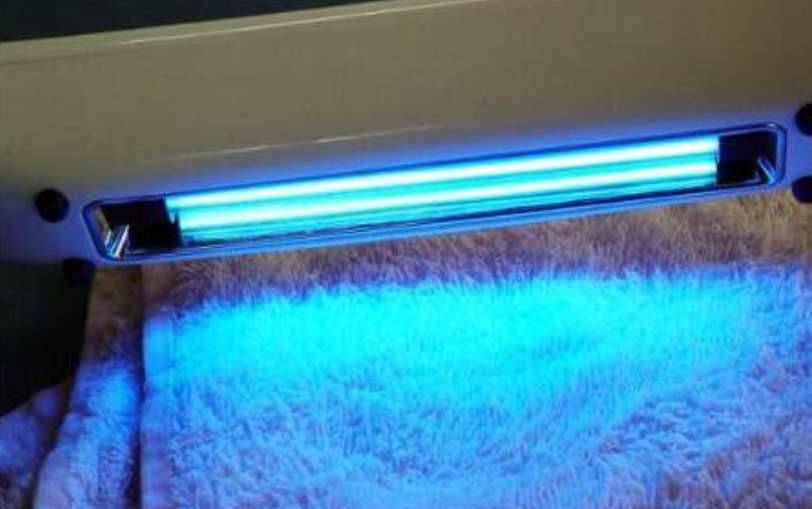
Turmeric extract can be used as a UV shielding agent in active food packaging for fruits and vegetables to improve the shelf life of food by shielding it from UV light. Curcumin was added to a film based on zein/chitosan for the preservation of blueberries. All films had low transmittance in the ultraviolet region, and the brightness of the film gradually decreased with the addition of curcumin (from 81.11 to 55.85), indicating that curcumin has good UV shielding ability [46]. Zhang et al. [47] grafted curcumin onto oxidized nanocellulose to obtain modified nanocellulose, which was then added to chitosan and cast into a film. The composite film had excellent UV shielding properties compared to the pure chitosan film, with UV barrier properties improved by 77.4%. This was mainly because the phenolic part of curcumin has strong UV absorption capacity. Curcumin was introduced into castor oil-based waterborne polyurethane as a chain extender, and a biologically active composite film was prepared by compounding with gelatin. As the mass fraction of curcumin-based waterborne polyurethane increased from 1% to 10%, the UV transmittance of the film decreased from 4.83% to 0.02%, almost completely achieving UV shielding [48]. At present, there is not much research on the ultraviolet shielding properties of curcumin. In the future, further research can be carried out on the application of this property in active food packaging and the related mechanisms.
4 Progress in the application of curcumin in smart packaging
Smart packaging refers to the introduction of new technologies such as information, electronics, and sensing into packaging to provide consumers with information about changes in the internal food or the environment in which the food is located. It is used to monitor the freshness of food in real time, without the need for consumers to analyze the various aspects of safe food demand. A responsive food packaging system is a novel type of smart packaging that can respond to various stimuli from the food or external environment (such as light, oxygen, humidity, pH, etc.) to monitor the quality and safety of the food in real time. Curcumin is photosensitive and can be used as a photosensitizer to produce active oxygen under irradiation at a specific wavelength to achieve an intelligent antibacterial effect. It also has a pH-responsive color change and can be used as an indicator to monitor the freshness of food in real time.
4.1 Curcumin as a photosensitizer
Light-responsive smart packaging materials refer to a class of materials that absorb a certain amount of light energy and undergo physical or chemical changes after being irradiated by ultraviolet light, near-infrared light, etc. [50]. Curcumin can be induced to photodynamically activate under blue light irradiation, producing a photochemical reaction and acting as a photosensitizer in antibacterial treatment. Photodynamic Inactivation (PDI) is a new type of sterilization technology that is environmentally friendly, low-energy and low-cost. It has been widely used in the medical field and has recently begun to appear in the food field [51]. Figure 5 shows a schematic diagram of the principle of photodynamic sterilization of curcumin. This non-thermal treatment is based on the simultaneous interaction of a non-toxic photosensitizer, light of an appropriate wavelength, and molecular oxygen. After the photosensitizer is stimulated with light of a specific wavelength, the photosensitizer in the ground state absorbs light of the required wavelength and undergoes a transition to the excited state, which in turn initiates a series of photochemical reactions that produce reactive oxygen species (ROS) that attack cellular DNA, RNA, proteins, etc., thereby causing cell death [52].
The bacteriostatic effect of blue-light-activated curcumin is not achieved by direct contact with the cell, but rather through the self-oxidation mechanism of curcumin. These effects lead to the production of intermediate products and an increase in the number of oxygen free radicals in the cell, thereby destroying the integrity of the cell. The closer the photosensitizer is to the bacterial cell, the more likely it is that the reactive oxygen species will have a negative effect on the cell's integrity. Once the bacterial cell is exposed to light, the photosensitizer absorbs the light energy, which is activated to produce reactive oxygen species such as hydrogen peroxide, superoxide and singlet oxygen. ROS then oxidize cell membrane components, including cholesterol in proteins, and amino acid residues containing nitrogen and sulfur, resulting in bacterial death [52]. Some practical applications of curcumin photodynamic sterilization technology have been studied, especially in the preservation of food to prevent bacterial contamination [53].
The application of curcumin as a photosensitizer for photodynamic disinfection in food packaging is mainly in the field of meat products and fruits and vegetables. The photodynamic effect is characterized by counting the number of bacteria on the food surface before and after PDI. Food samples contaminated with Staphylococcus aureus were cut into thin slices, incubated with 40 μg/mL curcumin, and then irradiated with 15 J/cm2 light at a wavelength of 450 nm. Microbiological analysis was performed by counting colonies. PDI reduced Staphylococcus aureus on beef, chicken, and pork samples by 1.5, 1.4, and 0.6 log CFU/mL, respectively. It can be seen that PDI can effectively reduce the contamination level of Staphylococcus aureus on the surface of meat, and has broad prospects for application in the field of microbiological food safety [54]. Incubating chicken skin with 300 μg/mL curcumin for 5 min and then irradiating with 32.1 kJ/m2 light at a wavelength of 430 nm reduced Lactobacillus monocytogenes and Salmonella spp. on the chicken skin by 2.9 and 1.5 log CFU/cm2, respectively [55].
In addition, no visual changes were observed in the appearance of the chicken skin after the photodynamic disinfection treatment. This indicates that curcumin can effectively inactivate pathogens on food without causing discoloration of the food surface [56]. It has also been shown that curcumin photodynamic treatment successfully extended the shelf life of oysters and sturgeon by 3–4 days and had a positive effect on their quality (e.g. color, flavor, texture, free amino acid content and free fatty acid levels) [57,58].
The application of PDI in fruits and vegetables can be characterized by testing changes in the hardness of the food itself. Chai et al. [59] studied the effect of curcumin photodynamic treatment for 4 min on the hardness of freshly cut pears stored at 4 °C. After 6 days of storage, the hardness of the pears was still high, only decreased from 70.78 N to 51.19 N. Other studies have shown that curcumin's PDI at 4 ℃ significantly extends the shelf life and quality of fresh dates, extending the shelf life by 70 days, and no changes in physicochemical properties were observed after treatment [60].
In addition to testing the minimum inhibitory concentration, the effect of curcumin photodynamic sterilization can also be characterized by observing changes in the cells on the surface of the food using SEM and TEM. Figure 6A shows the morphological and structural changes in the spores before and after curcumin photodynamic inactivation using SEM and TEM. The cell walls of the spores in the untreated group were uniform, smooth and full, and the cell nuclei were intact and round, while after 30 minutes of light exposure, the spores showed atrophy and fragmentation of the cell walls, vacuolization, and indistinct cell nuclear membranes [61]. Laura et al. [62] showed that compared with untreated cells, SEM showed that Staphylococcus aureus, Salmonella and Escherichia coli treated with curcumin PDT all showed obvious wrinkling and cell surface damage (Figure 6B).
In addition to having a good inhibitory effect on bacteria such as Gram-positive and Gram-negative bacteria, curcumin PDT also has a certain inhibitory effect on fungi. Pang Jiale et al. [63] studied the inhibitory effect of curcumin photodynamic sterilization technology on the growth of extended penicillium. Curcumin can slightly inhibit the growth of mycelia after a brief treatment, and the diameter of the colony of extended penicillium can be significantly reduced after curcumin PDI treatment. It can be seen that photodynamic treatment can effectively control the penicillium poisoning of apples and effectively inhibit the growth of extended penicillium, providing a certain theoretical basis for the development of food preservation technology. Further research is needed to better understand the factors that limit curcumin photodynamic sterilization technology, such as light distribution, food geometry and surface properties.
The antibacterial effect of curcumin photodynamic sterilization technology depends on a variety of factors, such as the concentration of curcumin and the application method. These factors play an important role in determining the potential of this antibacterial strategy in food packaging. In general, the inactivation of microorganisms by curcumin PDI is a concentration-dependent process: as the curcumin concentration increases, the survival rate of microorganisms gradually decreases [64-66]. Higher curcumin concentrations may promote the production of ROS in PDI, which is the main reason for its antimicrobial activity. However, after a certain concentration is reached, further increases in curcumin concentration may only slightly increase the inactivation rate, and may even reduce the antimicrobial activity [67]. This phenomenon may be related to the self-shielding effect of light, that is, the turbidity of the solution may hinder light penetration, thereby shielding the interaction between curcumin and light after a certain concentration threshold [68]. Therefore, the concentration of curcumin in food should be properly controlled to avoid the self-shielding effect.
There are two main methods for using curcumin as a photosensitizer in practical applications: one is to immerse the food directly in a curcumin solution, and the other is to spray or add curcumin to the surface of the food before light radiation. The national standard stipulates that the maximum dose of curcumin in food should not exceed 0.7 g/kg. In general, both methods can effectively inactivate microorganisms [69]. However, some foods, such as cereals and meat products, are not suitable for long-term soaking. In contrast, the spraying method not only does not affect the quality of the food, but also provides a more even coating on the surface of the food without contaminating the turmeric solution. Therefore, the use of the spraying method is more conducive to the widespread use of curcumin in the food industry.
4.2 Curcumin as an acid-base indicator
During the process of food spoilage, fruits and vegetables will metabolize lactic acid, acetic acid, malic acid and other acidic substances due to bacterial and fungal infections, resulting in a decrease in the pH of the local microenvironment of the food. Meat products will produce alkaline substances such as volatile alkaline nitrogen under the action of microorganisms as the storage time increases, resulting in an increase in the surface pH [70]. Curcumin reacts to changes in pH caused by food spoilage and/or changes in the external environment and shows a color change. It can be used as a colorimetric pH indicator to monitor quality changes during food storage in real time. The H atom on the β-diketone chain of curcumin can undergo intramolecular transfer, so its molecular structure exists in the form of a keto-enol tautomer. In acidic and neutral aqueous solutions, it mainly exists in the form of a ketone, while in alkaline aqueous solutions it mainly exists in the form of an enol [15]. In general, the color of a turmeric solution is bright yellow under acidic and neutral conditions. When the pH increases to alkaline conditions, the color of the solution changes to red, and the red color gradually deepens with increasing pH.
Curcumin can be used as an acid-base indicator in smart food packaging to monitor the freshness of fruits and meat products. The color difference value of the smart indicator film can be used to determine the quality of the food according to the color change reference on the packaging. Li et al. [71] prepared a konjac glucomannan-based smart film of curcumin and bacterial cellulose nanofibers. As the packaged beef deteriorated, the color of the film gradually changed from yellow to red, indicating that the film can be used as a pH colorimetric indicator for meat. In addition, as can be seen from the UV-Vis spectrum in Figure 7A, the absorption peak of curcumin shifts from 428 nm to 472 nm with increasing pH. The red shift of the peak position is related to the reversible structural transformation of curcumin under different pH values.
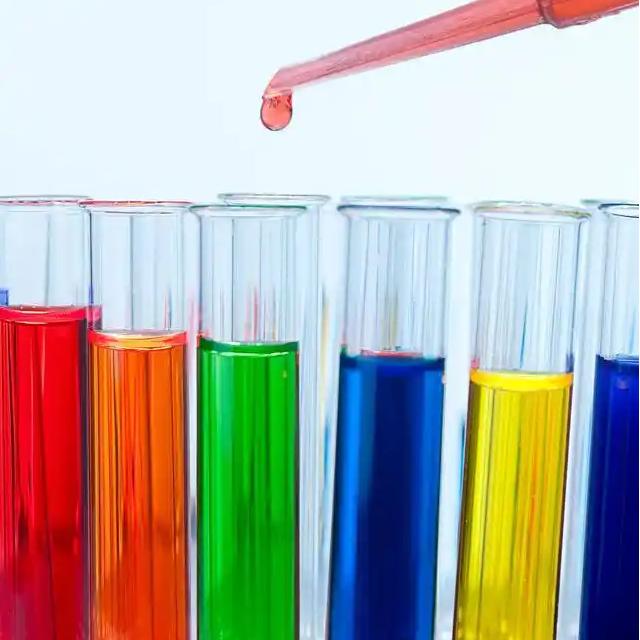
Liu Di [72] used octenyl succinate-modified starch as the solid particle of a Pickering emulsion to encapsulate curcumin and prepare a packaging film. This packaging film had a color-changing response to the spoilage of pangasius fish. As the pH increased from 3.0 to 10.0, the color of the curcumin changed from yellow to red. Because curcumin is easily decomposed by light, it is usually encapsulated to form microcapsules to better monitor the degree of food spoilage. Liu et al. [73] prepared gelatin/curcumin/chitosan microcapsules, and added the microcapsules to carboxymethyl cellulose-based films to monitor food freshness. As shown in Figure 7B, when the pH value is 3–5, the color of the composite film changes from dark to light, and then from light to dark. When the pH value is 5–7, it becomes light again. Under alkaline conditions, the red shift of the film is obvious, This is due to the deprotonation of curcumin. Zhang et al. [74] added curcumin to a polyvinyl alcohol film for the quality monitoring of shrimp meat, and established a link between the color of the film, the volatile basic nitrogen content, and the color difference value. The volatile basic nitrogen content of the shrimp was positively correlated with the color difference value.
These intelligent systems will help to improve food safety and shelf life, and provide consumers with a more intuitive and more accurate indication of food freshness.
The color difference of curcumin in response to changes in pH is not significant, and the accuracy and sensitivity of the smart indicator to indicate changes in food quality is lower than that of the sensor. Curcumin can be mixed with other natural indicators (such as anthocyanins and betalains) to enrich the color change of the pH indicator, so as to better judge the freshness range of the food quality. In addition, the stability of curcumin is affected by the light, temperature and oxygen in the storage environment, which indirectly affects its sensitivity and accuracy in responding to changes in acidity and alkalinity.
Encapsulation (in the form of emulsions or microcapsules) can be used to improve the stability of curcumin as an indicator, and its stability can also be improved by cross-linking it with a membrane substrate. At present, the color development of curcumin is mostly determined and analyzed by directly immersing the prepared indicator labels in buffers with different pH values. The relationship between microbial growth/food pH/indicator label color has not been established, nor has the relationship between microbial growth and color change been analyzed. This limits the practical application of indicator labels prepared with curcumin and their accuracy in indicating the degree of food spoilage. This is also an area that requires detailed research in the future.
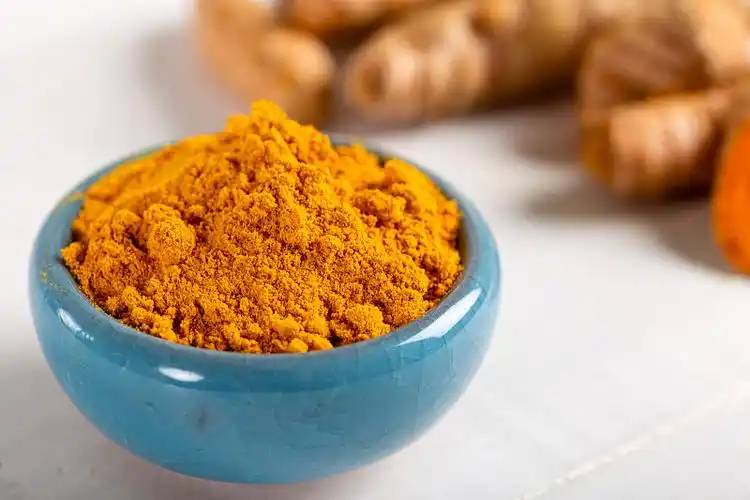
5 Conclusion and outlook
Curcumin, as a natural food preservative, has the advantages of being safe and non-toxic, antibacterial, antioxidant, UV shielding, photosensitive, and acid-base responsive discoloration. It has great development prospects in food packaging applications. This paper mainly describes the structure and physicochemical properties of curcumin, as well as its mechanism of action and application progress as an antimicrobial agent, antioxidant, UV shielding agent, photosensitizer and pH indicator in food packaging. Curcumin can extend the shelf life of food by preventing lipid oxidation and limiting microbial growth, and can be used as an indicator material for real-time evaluation of the safety and quality of packaged food. However, more comprehensive research is needed on curcumin to improve stability, water solubility, and to understand the antibacterial and antioxidant mechanisms, in order to expand the scope of curcumin applications in food packaging.
Based on the current research and application status of curcumin in food packaging, the following prospects for future research are proposed: (1) In the future, it is possible to consider combining curcumin with different antimicrobial agents (such as oregano essential oil and clove essential oil) to exert a synergistic antimicrobial effect. (2) Strengthening research on the antimicrobial and antioxidant mechanisms of curcumin can start with the microscopic changes in the structure of curcumin during the antimicrobial and antioxidant processes, and establish the correlation between the microscopic structure and functional properties of curcumin. (3) Further develop the application of curcumin in food packaging.
At present, most of the applications of curcumin focus on its antibacterial and antioxidant properties. Its photosensitivity, ultraviolet shielding and other functions can be developed for use in the food industry. (4) The low water solubility and instability of curcumin limits its application in food packaging. It can be encapsulated using nanoparticles and prepared in the form of an emulsion or microcapsules. (5) At present, there is no established link between microbial growth/food pH/indicator label color, nor has the law of microbial growth and color change been analyzed, which limits the practical application and accurate display of the degree of food spoilage of indicator labels prepared using curcumin. This is also an area that requires detailed research in the future. Studying the progress of curcumin in food packaging applications is conducive to promoting its further development in the food industry, thereby addressing the food safety issues that people are closely concerned about and keeping up with the great strategy of “Healthy China”.
Reference:
[1]PASQUALE R, VITTORIO C. Editorial: Microbiological Safety of Foods [J]. Foods. 2021, 10(1): 53.
[2]LEE WR. Extraintestinal foodborne pathogens [J]. Annual Review of Food Science and Technology, 2020, 11(1): 275-294.
[3]MONICA G, LYDIA F, ARMANDO C, et al. Relationships between food and diseases: What to know to ensure food safety [J]. Food Research International, 2020, 137: 109414.
[4]HU X J, LU C, HOWYN T, et al. Active food packaging made of biopolymer-based composites[J]. Materials, 2023, 16(1): 279.
[5]SHISHODIA S, SETHI G, AGGARWAL B B. Curcumin: getting back to the roots [J]. Annals of the New York Academy of Sciences, 2005, 1056(1): 206-217.
[6] Chen Mengqi, Zhou Mingrui, Han Yahong. Research progress on the application of curcumin in food [J]. China Food Additives, 2022, 33(10): 292-300.
[7] Huang Hahe, Huang Chongxing, Zhang Linyun, et al. Research progress on the application of curcumin in food preservation [J]. Food Industry Science and Technology, 2020, 41(7): 320-331.
[8] Huang Xinghai, Wei Jianhua, Zhong Haiyi. Research progress of curcumin intelligent active packaging film with natural polymer [J/OL]. Food and Fermentation Industry: 1-8 [2024-03-26].
[9]ROY S, PRIYADARSHI R, EZATI P, et al. Curcumin and its uses in active and smart food packaging applications-a comprehensive review [J]. Food Chemistry, 2022, 375: 131885.
[10]ALIABBASIN, FATHIM, EMAM DZ. Curcumin: A promising bioactive agent for application in food packaging systems [J]. Journal of Environmental Chemical Engineering, 2021, 9(4): 105520.
[11]TAMBAWALA H, BATRA S, SHIRAPURE Y, et al. Curcumin-A bio-based precursor for smart and active food packaging systems: A review [J]. Journal of Polymers and the Environment, 2022, 30: 2177-2208.
[12]ANDREA A C, MAHMOOD A, ANWESHA S. Recent advances in emulsion-based delivery approaches for curcumin: From encapsulation to bioaccessibility [J]. Trends in Food Science & Technology, 2018, 71: 155-169.
[13]SAMAN S, ALI R, LAURENCE D M, et al. Recent advances to improve curcumin oral bioavailability [J]. Trends in Food Science and Technology, 2021, 110: 253-266.
[14]PAYTON F, SANDUSKY P, ALWORTH W L. NMR study of the solution structure of curcumin [J]. Journal of Natural Products, 2007, 70(2): 143-146.
[15]SHARMA RA, GESCHER AJ, STEWARD WP. Curcumin:The story so far [J]. European Journal of Cancer, 2005, 41 (13): 1955-1968.
[16]MAHESH K, DAVID J M. Recent advances in colloidal delivery systems for nutraceuticals: A case study-delivery by design ofcurcumin [J]. Journal of Colloid and Interface Science, 2019, 557: 506-518.
[17] Gao Yuan, Li Chenyu, Li Chunwei. Application of anthocyanins and curcumin in food packaging [J]. Journal of Food Safety and Quality Testing, 2022, 13(16):5137-5143.
[18]ZHENG D T, HUANG C X, HUANG H H, et al. Antibacterial mechanism of curcumin: A review [J]. Chemistry & Biodiversity, 2020, 17(8): 171-200.
[19]DAI C, LIN J, LI H, et al. The natural product curcumin as an antibacterial agent: Current achievements and problems [J]. Antioxidants. 2022, 11(3): 459.
[20] Kang Shunai. Protective effect and mechanism of curcumin against ultraviolet radiation damage [D]. Changchun: Jilin University, 2009.
[21]MARAL S D, RAM M, MICHAEL E N, et al. An insight into curcumin-based photosensitization as a promising and green food preservation technology [J]. Comprehensive Reviews in Food Science and Food Safety, 2020, 19(4): 1727-1759.
[22]YAM KL, TAKHISTOVP T, MILTZ J. Intelligent packaging: Concepts and applications [J]. Journal of Food Science, 2005, 70: R1-R10.
[23] Hu Xiaoliang, Shen Jian. Research progress on natural preservatives for freshwater fish [J]. Modern Food Science and Technology, 2013, 29(4): 925-931.
[24]CHANG B P, TRINH B M, TADELE D T, et al. Natural antioxidant and antimicrobial agents and processing technologies for the design of active food packaging polymers [J]. Polymer Reviews, 202363(4): 961-1013.
[25]DIPTI R, JAY K S, NILANJIAN R, et al. Curcumin inhibits FtsZ assembly: an attractive mechanism for its antibacterial activity [J]. Biochemical Journal, 2008, 410(1): 147-155.
[26]POONAM T, MADHURI S, HIMANI K, et al. Bactericidal activity of curcuminI is associated with damaging of bacterial membrane [J]. Plos One, 2015, 10(3): 121-133.
[27]WANG Y, LU Z, WU H. et al. Study on the antibiotic activity of microcapsule curcumin against foodborne pathogens [J]. International Journal of Food Microbiology, 2009, 136(1): 71-74.
[28]ARTUR A, MARCIN O, TOMASZ M K. Curcumin, a natural antimicrobial agent with strain-specific activity [J]. Pharmaceuticals. 2020, 13(7): 153.
[29]ZHANG D, LUO J, YAND, et al. Effects of two curcuminoidson candida albicans[C]. Chinese Herbal Medicines, 2012, 4(3): 205-212.
[30] Cao Liyu, Chen Cheng, Zhou Zhi, et al. Preparation of carboxymethyl chitosan/oxidized carboxymethyl cellulose/curcumin composite film and its application in strawberry coating preservation [J]. Modern Food Science and Technology, 2022, 38(12):247-254.
[31]AYCAA, CLAYTON J R, SEMIH B, et al. Characterization of curcumin incorporated guar gum/orange oil antimicrobial emulsion films [J]. International Journal of Biological Macromolecules, 2020, 148: 110-120.
[32]GUNES H, GULEN D, MUTLU R, et al. Antibacterial effects of curcumin: An in vitro minimum inhibitory concentration study [J]. Toxicology and Industrial Health, 2016, 32(2): 246-250.
[33] Liu Yinghui. Preparation of curcumin liposomes and study of their antibacterial activity in vitro and in vivo [D]. Shenyang: Shenyang Agricultural University, 2021.
[34] Li Haiying, Qiu Mingheng, Chen Jian et al. Synthesis and antibacterial evaluation of L-arginine-based curcumin derivatives [J]. Journal of Hebei University (Natural Science Edition), 2021, 41(2): 155-160.
[35]SANDRA L, SARA G, JULIÁN L, et al. Antioxidant activity of curcuminoids [J]. Physical Chemistry Chemical Physics, 2019, 21:3752-3760.
[36] Song Limin. Study on the in vitro antioxidant activity and structure-activity relationship of curcuminoid compounds [D]. Yantai: Yantai University, 2018.
[37]JAYAPRAKASHA G K, JAGANMOHAN R L, SAKARIAH K K. Antioxidant activities of curcumin, demethoxycurcumin, and bisdemethoxycurcumin [J]. Food Chemistry, 2006, 98(4): 720-724.
[38]ANNIA G, RUSLÁN Á D, MARÍA T R S, et al. Role of the reacting free radicals on the antioxidant mechanism of curcumin [J]. Chemical Physics, 2009, 363(1-3): 13-23.
[39]MA Q Y, REN Y M, WANG L J. Investigation of antioxidant activity and release kinetics of curcumin from tara gum/polyvinyl alcohol active film [J]. Food Hydrocolloids, 2017, 70: 286-292.
[40]SWARUP R, JONG W R. Carboxymethyl cellulose-based antioxidant and antimicrobial active packaging film incorporated with curcumin and zinc oxide [J]. International Journal of Biological Macromolecules, 2020, 148: 666-676.
[41] Li Ting, Liu Lei, Huang Min, et al. Preparation, characterization, in vitro digestion and antioxidant activity of zein-carboxymethyl chitosan nanocomplexes loaded with curcumin. Modern Food Science and Technology, 2022, 38(12): 110-117.
[42]WU J, CHEN J, WEI Z, et al. Fabrication, evaluation, and antioxidant properties of carrier-free curcumin nanoparticles [J]. Molecules. 2023: 28(3): 1298.
[43]ABDOU E S, GALHOUM G F, MOHAMED E N. Curcumin loaded nanoemulsions/pectin coatings for refrigerated chicken fillets [J]. Food Hydrocolloids, 2018, 83: 445-453.
[44]BO H L, HYUN AC, MI R K, et al. Changes in chemical stability and bioactivities of curcumin by ultraviolet radiation [J]. Food Science and Biotechnology, 2013, 22: 279-282.
[45]ZOE R T, JACK W S, DIMITAR D S. Shielding from UV photodamage: Implications for surficial origins of life chemistry on the early earth [J]. ACS Earth and Space Chemistry, 2021, 5(2): 239-246.
[46]MANNI R, ZHE C, LI C, et al. Preparation of zein/chitosan/eugenol/curcumin active films for blueberry preservation[J]. International Journal of Biological Macromolecules 2022, 22(3): 1054-1066.
[47]ZHANG X H, LI Y T, GUO M M, et al. Antimicrobial and UV blocking properties of composite chitosan films with curcumin grafted cellulose nanofiber [J]. Food Hydrocolloids, 2021, 112(10): 63-77.
[48]ZHANG T, ZHANG W S, DENG YJ, et al. Curcumin-based waterborne polyurethane-gelatin composite bioactive films for effective UV shielding and inhibition of oil oxidation [J]. Food Control, 2022, 141(10): 109-119.
[49] Han Xiaoxue, Si Jun, Wu Junfeng, et al. Research progress of freshness indicators for intelligent food packaging [J]. Journal of Food Safety and Quality, 2023, 14(7): 173-181.
[50]Tang Yufang. Structural stability of light-responsive polymer micelles and their light-controlled acid-sensitive behavior [D]. Xiangtan: Xiangtan University, 2013.
[51]COSSUM, LEDDAL, COSSUA. Emerging trends in the photodynamic inactivation (PDI) applied to the food decontamination [J]. Food Research International, 2021, 144: 110358.
[52]YANG Q Q, ARAKKAVEETTIL K F, GOWOON K, et al. Antimicrobial and anticancer applications and related mechanisms of curcumin-mediated photodynamic treatments [J]. Trends in Food Science & Technology, 2020, 97: 341-354.
[53]CHEN B, HUANG J, LIU Y. et al. Effects of the curcumin-mediated photodynamic inactivation on the quality of cooked oysters with Vibrio parahaemolyticus during storage at different temperature [J]. International Journal of Food Microbiology, 2021, 345: 109152.
[54]THAILA Q C, KATE C B, ÉRICA B G, et al. Effects of ultraviolet light and curcumin-mediated photodynamic inactivation on microbiological food safety: A study in meat and fruit [J]. Photodiagnosis and Photodynamic Therapy, 2020, 30: 101678.
[55]GAO J, MATTHEWS K R. Effects of the photosensitizer curcumin in inactivating foodborne pathogens on chicken skin [J]. Food Control, 2020, 109: 106959.
[56]TORTIK N, SPAETH A, PLAETZER K. Photodynamic decontamination of foodstuff from Staphylococcus aureus based on novel formulations of curcumin [J]. Photochemical and Photobiological Sciences, 2014, 13: 1402-1409.
[57]GONG C, LI Y, GAO R, et al. Preservation of sturgeon using a photodynamic non-thermal disinfection technology mediated by curcumin [J]. Food Bioscience, 2020, 36: 100594.
[58]LIU F, LIZ, CAO B, et al. The effect of a novel photodynamic activation method mediated by curcumin on oyster shelf life and quality [J]. Food Research International, 2016, 87: 204-210.
[59]CHAI Z Y, ZHANG F, LIU B, et al. Antibacterial mechanism and preservation effect of curcumin-based photodynamic extends the shelf life of fresh-cut pears [J]. LWT- Food Science and Technology, 2021, 142: 110941.
[60]FAHAD A A, RAM M, YASMINA S. The effect of photosensitization mediated by curcumin on storage life of fresh date (Phoenix dactylifera L.) fruit [J]. Food Control, 2018, 93: 305-309.
[61]SONG LL, ZHANG F, YU J S, et al. Antifungal effect and possible mechanism of curcumin mediated photodynamic technology against Penicillium expansum [J]. Postharvest Biology and Technology, 2020, 167: 111234.
[62]LAURA A DM P, ADRIANE F, CARLOS E B, et al. Effect of an antimicrobial photoinactivation approach based on a blend ofcurcumin and Origanum essential oils on the quality attributes of chilled chicken breast [J]. LWT- Food Science and Technology, 2023, 176: 114484.
[63] Pang Jialei, Zhang Fang. Inhibitory effect of curcumin photodynamic technology on the growth and secretory production of patulin by extended Aspergillus niger [J]. Modern Food Science and Technology, 2023, 39(2):229-234.
[64]JIANG Y, ALBERT W L, HUA H Y, et al. Photodynamic action of LED-activated curcumin against Staphylococcus aureus involving intracellular ROS increase and membrane damage [J]. International Journal of Photoenergy, 2014, 51(4): 1-7.
[65]WANG Z, JIA Y, LI W, et al. Antimicrobial photodynamic inactivation with curcumin against Staphylococcus saprophyticus, in vitro and on fresh dough sheet [J]. LWT- Food Science and Technology, 2021, 147: 111567.
[66]WEI C, ZHANG F, SONG L, et al. Photosensitization effect of curcumin for controlling plant pathogen Botrytis cinerea in postharvest apple[J]. Food Control, 2021, 123: 107683.
[67] Jiang Xu, Xiong Sigou, Peng Li, et al. Progress in the application of curcumin-mediated photodynamic technology in fresh cut fruits and vegetables [J]. Packaging Engineering, 2023, 44(7): 115-121.
[68]SROKAR, HERMWILLE M, HEMB B, et al. Impact of photosensitizer parameters on the self-shielding effect in photodynamic therapy A comparison [J]. Photodiagnosis and Photodynamic Therapy, 2017, 17: A50-A51.
[69] National Health and Family Planning Commission of the People's Republic of China. GB 2760-2014 National Food Safety Standard—Food Additive Use Standards [S]. Beijing: China Standards Press, 2015.
[70] An Zhaoxia, Miao Yuyang, Du Yuwan et al. Research progress on the mechanism of biological factors related to food spoilage and deterioration [J]. Journal of Food Safety and Quality, 2022, 13(1): 86-93.
[71]LI N, YANG X B, LIN D H. Development of bacterial cellulose nanofibers/konjac glucomannan-based intelligent films loaded with curcumin for the fresh-keeping and freshness monitoring of fresh beef [J]. Food Packaging and Shelf Life, 2022, 34: 100989.
[72] Liu Di. Research on intelligent packaging film based on starch for curcumin Pickering emulsion [D]. Changchun: Jilin University, 2022.
[73]LIU YW, MAY L, LIU Y, et al. Fabrication and characterization of pH-responsive intelligent films based on carboxymethyl cellulose and gelatin/curcumin/chitosan hybrid microcapsules for pork quality monitoring[J]. Food Hydrocolloids, 2022, 124: 107224.
[74]ZHANG J J, HUANG X W, ZOU X B, et al. A visual indicator based on curcumin with high stability for monitoring the freshness of freshwater shrimp, Macrobrachium rosenbergii [J]. Journal of Food Engineering, 2021, 292: 110290.


 English
English French
French Spanish
Spanish Russian
Russian Korean
Korean Japanese
Japanese